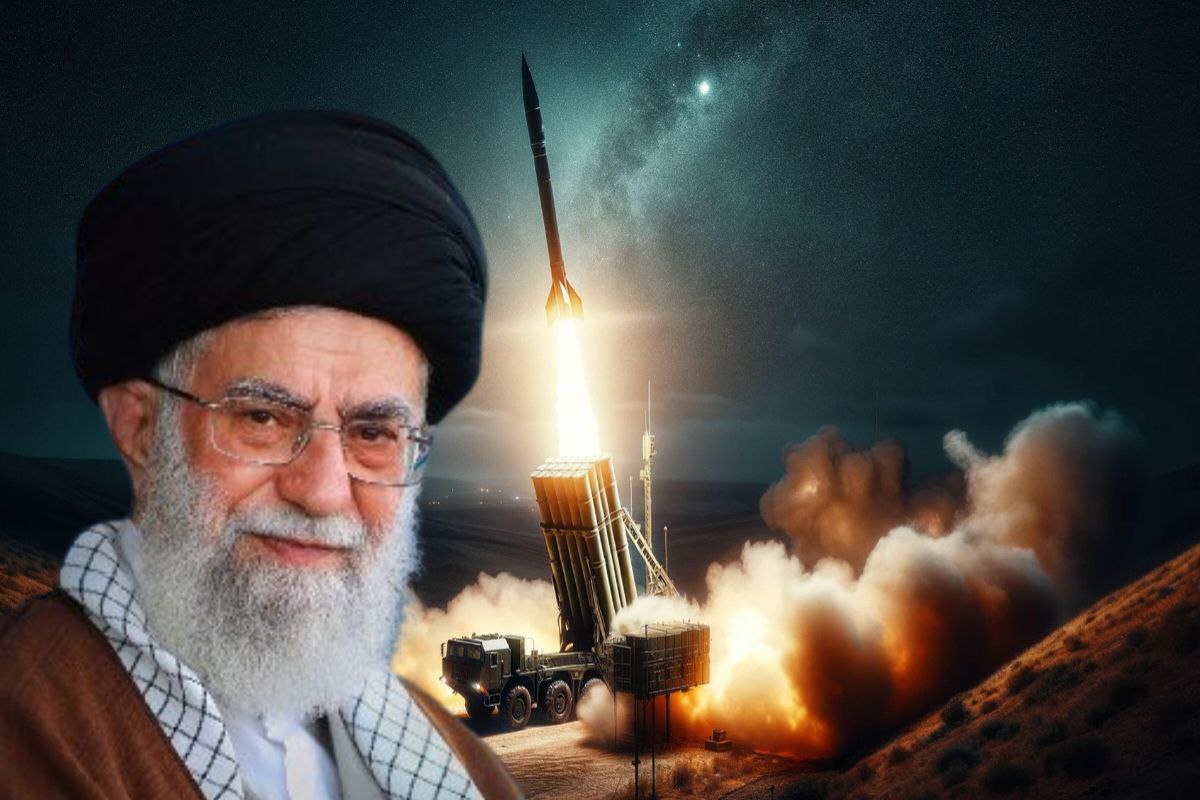Iran Held Back Its Deadliest Missiles:Iran and Israel agreed to a sudden ceasefire after 12 days of intense conflict. But a new report reveals that Iran used only older missiles in the war, raising critical questions about its military strategy and why the U.S. may have rushed to halt the fighting.
Iran Held Back Its Deadliest Missiles — Here’s Why the U.S. Rushed to Broker a Ceasefire
The recent Israel-Iran war ended as abruptly as it had begun, with both sides agreeing to a ceasefire. The truce was officially announced by U.S. President Donald Trump, following diplomatic mediation efforts by the Qatari government. But a new report has shed light on a compelling question: Why did the United States push for a ceasefire when both nations were seemingly prepared to continue the conflict?
According to intelligence assessments, Iran used primarily its older generation of ballistic missiles during the 12-day war. Around 70% of the missiles launched by Tehran were not its newer, more lethal models, but rather older weapons like the Ghadir and Emad ballistic missiles.
The Ghadir missile is an improved version of the Shahab-3 medium-range ballistic missile, which has been in service since 2003. It comes in three variants with ranges spanning from 1,350 km to 1,950 km and carries a payload of 650 kg. The Emad missile, commissioned in late 2015, is an upgraded version of the Ghadir with better guidance systems and a range of around 1,700 km, capable of delivering a 750 kg warhead.
Despite relying on these earlier-generation weapons, Iran managed to achieve significant strategic and tactical success. The missiles demonstrated remarkable precision and were able to penetrate Israeli air defense systems. The results were devastating: from Tel Aviv to Haifa, Ramad Khan to Bisha, multiple Israeli cities suffered heavy destruction. Buildings were reduced to heaps of twisted metal and debris, showcasing the raw destructive capability of Iran’s ballistic arsenal.
U.S. President Donald Trump, speaking at the NATO summit, acknowledged the intensity of the fighting. “Iran fought like hell, and it wasn’t easy to stop either Iran or Israel,” Trump said. “They’ve had a big fight. Like two kids in a schoolyard—you know, they fight like hell. You can’t stop them. Let them fight for about two, three minutes, then it’s easier to stop them.”
This observation from the U.S. President points to the scale of the conflict and the difficulty in achieving a halt in hostilities. Yet, Iran’s decision not to deploy its newer and deadlier missiles raises an important strategic question. Iran’s advanced missile systems include the Sajil-2, Fattah-1, Kheibar Shekan, and others, which have ranges nearing 2,000 km and payloads up to 700 kg. These were largely absent from the battlefield.
Analysts suggest that Iran may be holding back its most advanced missile systems for a future, potentially more drawn-out conflict. The strategic reserve of more powerful missiles could provide Iran with sustained firepower over a prolonged period, making a future confrontation with Israel far more dangerous. This theory gains credence considering Iran’s successful use of older missiles to inflict substantial damage while keeping its cutting-edge capabilities in reserve.
The ability of older Iranian missiles to evade Israeli air defense systems is itself a significant revelation. It raises concerns about the effectiveness of Israeli defenses against Iran’s newer generation of missiles, which are likely more accurate, faster, and harder to intercept.
Chris Doyle, Director of the Council for Arab-British Understanding, commented on the evolving dynamic. He noted that despite the damage inflicted, Israel still maintains air superiority. “Israel now knows that it has still air supremacy—it would take a long time for the Iranians to build back air defenses,” he said. Doyle added that Israel has shown it can strike effectively if it perceives a threat, such as the movement of nuclear materials.
However, Doyle also pointed out the possibility of a diplomatic re-engagement. “The United States and Iran, once this calms down a bit, both have an interest in coming to some form of deal,” he said, emphasizing that a return to negotiations is a shared interest.
As the dust settles, the world is left with critical questions: Is Israel ready to return to the negotiating table? Has Iran just tested the waters of its military capability without fully revealing its hand? And most importantly, did the U.S. push for a ceasefire out of concern over what might come next if Iran unleashed its full missile arsenal?
For now, the ceasefire holds—but the strategic silence of Iran’s newer missiles hints at a potentially more dangerous chapter ahead.
Disclaimer:
This article is based on publicly available reports and expert commentary. It does not represent official military assessments or government positions. The situation remains fluid and may evolve with time.

